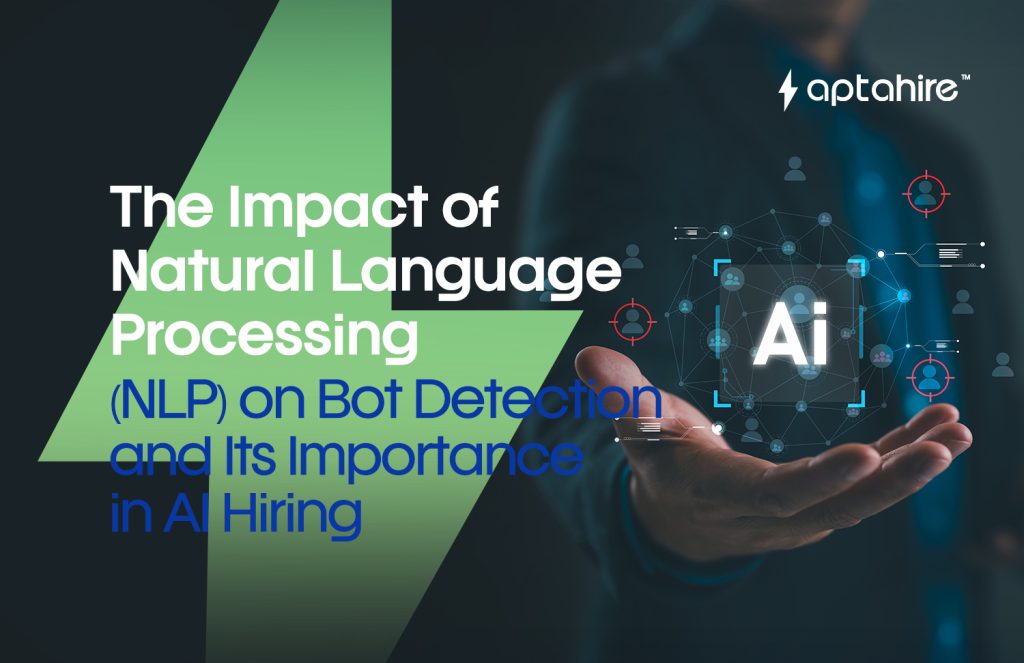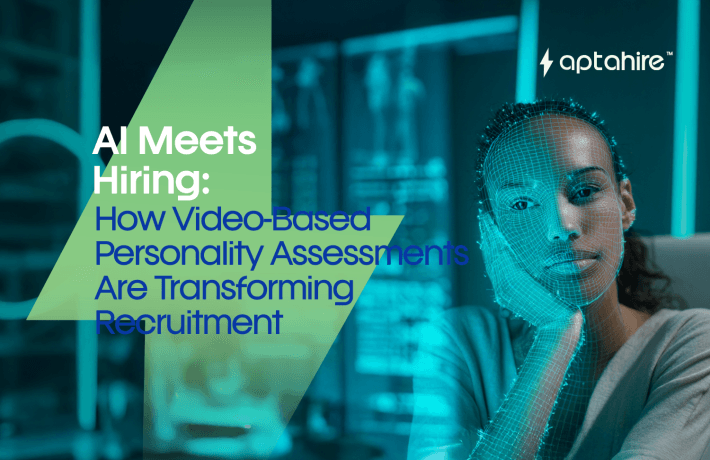The Impact of Natural Language Processing (NLP) on Bot Detection and Its Importance in AI Hiring

Introduction: Are You Really Talking to a Human?
Imagine you’re conducting a virtual job interview. The candidate looks promising on paper, speaks fluently, and answers every question with precision. But something feels… off. You can’t quite put your finger on it. Could it be that the person on your screen isn’t a person at all?
Welcome to the era where bots can mimic human behavior so convincingly that even experienced recruiters struggle to tell them apart. This is where Natural Language Processing (NLP) steps in, not just as a tool, but as a game-changer in the hiring world.
What is NLP (Natural Language Processing), Really?
Let’s keep it simple.
NLP is a subfield of AI that gives machines the ability to read, understand, and generate human language. Think of it as the technology behind:
- Smart assistants (like Siri or Alexa)
- Chatbots on websites
- Language translation tools
- Spam filters in your email
In recruitment, NLP plays a starring role in analyzing resumes, conducting pre-screening interviews, and most importantly: detecting bot behavior during hiring.
Why Are Bots a Problem in Virtual Hiring?
The digital hiring landscape, especially post-pandemic, has exploded. With remote interviews becoming the norm, the door has also opened for malicious bots and fake applicants to sneak into the pipeline.
- Some applicants use AI-generated answers to cheat assessments.
- Others deploy bots to apply en masse using stolen or false identities.
- In worst cases, bots are used to fool real-time interviews with voice synthesis and pre-fed responses.
The result? Wasted time, money, and trust.
How NLP Helps Detect Bots in Hiring
Here’s where NLP becomes your virtual lie detector (but smarter and less intimidating).
1. Language Pattern Analysis
NLP can detect repetitive or overly polished patterns in speech and writing, hallmarks of AI-generated content. Real humans make small errors, take pauses, or adapt language contextually. Bots don’t (yet).
2. Response Contextualization
Bots often struggle with context. NLP-powered tools can assess whether a candidate’s answer logically fits the question or if it’s just a well-phrased but unrelated response.
3. Speech Disfluency Detection
Ever said “uh,” “um,” or repeated a phrase while thinking? That’s natural human speech. NLP models analyze these disfluencies to differentiate humans from bots who speak in perfectly fluent but robotic tones.
4. Syntax & Semantics Evaluation
Human language has quirks; idioms, jokes, cultural references. NLP tools pick up on this and flag when responses are too generic, flat, or suspiciously neutral.
5. Sentiment Analysis
Genuine candidates exhibit emotions; nervousness, excitement, or curiosity. NLP evaluates tone and sentiment to spot unnatural flatness often seen in bot-generated voices.
Real-World Applications: What Companies Are Doing Today
- AI hiring platforms are integrating NLP to evaluate open-ended interview answers.
- Applicant Tracking Systems (ATS) use NLP to compare resumes with job descriptions and detect anomalies.
- Behavioral interview bots use NLP to engage candidates in real-time and flag bot-like inconsistencies.
This isn’t science fiction. It’s happening now.
Why It Matters: The Bigger Picture
Hiring isn’t just about ticking off qualifications, it’s about understanding people, gauging potential, and building trust. If bots start infiltrating this process unchecked, we risk:
- Unqualified hires
- Security breaches
- A diluted talent pool
- Decreased trust in virtual hiring tools
With NLP, hiring teams gain a reliable set of eyes and ears, one that listens not just to what’s said, but how it’s said.
Human + Machine: The Future of Hiring
Let’s be clear, NLP isn’t replacing humans. It’s empowering them. It helps recruiters spend more time on meaningful conversations and less time weeding out imposters.
In fact, NLP works best when combined with human judgment. Recruiters can review NLP-generated insights, use them to guide interviews, and make more confident hiring decisions.
Conclusion: Smarter Hiring Starts with Smarter Tools
As AI evolves, so do the challenges in hiring. Bots will get smarter. But so will we.
Thanks to Natural Language Processing, companies now have a powerful ally in detecting deception and ensuring the right candidates make it through.
In a world where anyone (or anything) can appear on a video call, NLP ensures you’re always talking to the real deal.
Bonus: What to Look for in an NLP-Enabled Hiring Tool
- Real-time interview analysis
- Context-aware response checking
- Disfluency and emotion detection
- Resume parsing with anomaly detection
- Easy recruiter dashboards
The smarter your tools, the stronger your team.
FAQs
1.What is Natural Language Processing (NLP)?
NLP is a branch of artificial intelligence that helps computers understand, interpret, and respond to human language. It allows machines to read text or listen to speech and then determine meaning, emotion, or intent behind it.
2.How does NLP help in detecting bots during virtual interviews?
NLP analyzes how a candidate speaks or types — sentence structure, vocabulary, fluency, timing, and even tone. Bots often lack natural flow, emotional nuance, and real-time contextual awareness, which NLP can easily flag.
3.What are some signs NLP tools look for to spot a bot?
Some red flags include:
Unusual delays or overly fast responses
Repetitive phrasing or copy-paste patterns
Lack of personal context or emotional cues
Robotic or monotone voice modulation
4.Why is bot detection important in AI-powered hiring?
Bots can be used to cheat the system — answering questions with pre-programmed responses or impersonating real applicants. This compromises hiring quality. Bot detection ensures only genuine, qualified humans go through.
5.Is NLP used only for bot detection in interviews?
Not at all. NLP is also used to analyze communication skills, understand candidate intent, gauge sentiment, and assess emotional intelligence — all crucial in finding the right talent.
6.Can bots mimic human behavior well enough to bypass NLP checks?
Basic bots? Not really. Advanced bots using AI might get close, but with robust NLP systems analyzing tone, coherence, and interaction quality, even sophisticated bots often fall short of fooling the system.
7.Does NLP invade my privacy as a candidate?
Not when used ethically. Good hiring platforms use NLP only to analyze language patterns — not personal data. It’s about ensuring a fair and authentic evaluation for all candidates.
8.How accurate is NLP in detecting bots?
While not 100% foolproof, NLP combined with other AI signals (like facial recognition, typing speed, or voice stress) makes bot detection highly accurate — especially in structured interviews.
9.Can NLP help improve diversity and inclusion in hiring?
Yes! By focusing on language patterns rather than accents, appearance, or biased judgments, NLP helps create a level playing field where candidates are assessed on how they communicate, not who they are.
10.What’s the future of NLP in hiring tech?
The future is exciting. NLP will become more advanced in understanding context, intent, and even sarcasm. It will not only detect bots but also give deep insights into candidate potential, cultural fit, and leadership ability.



